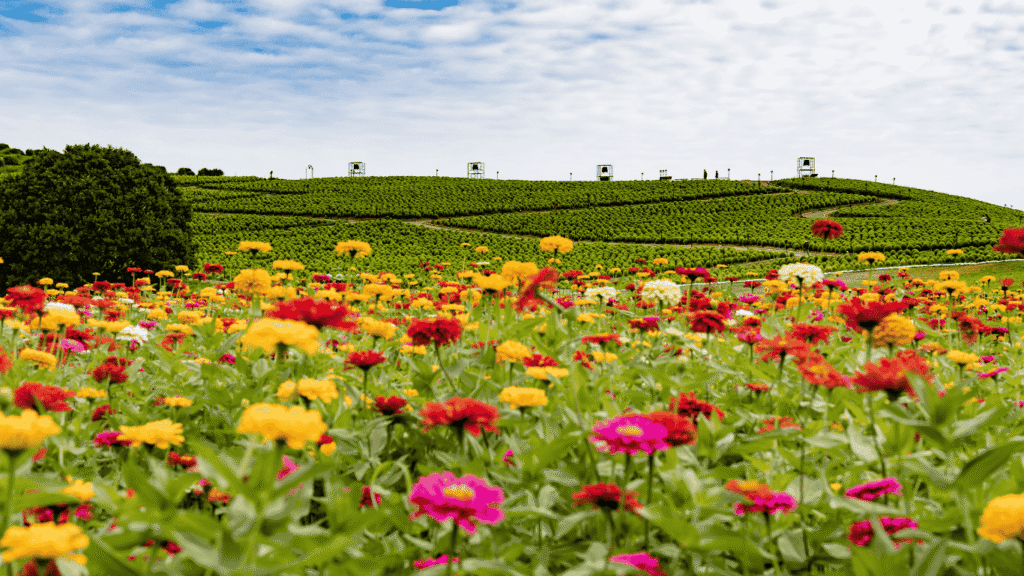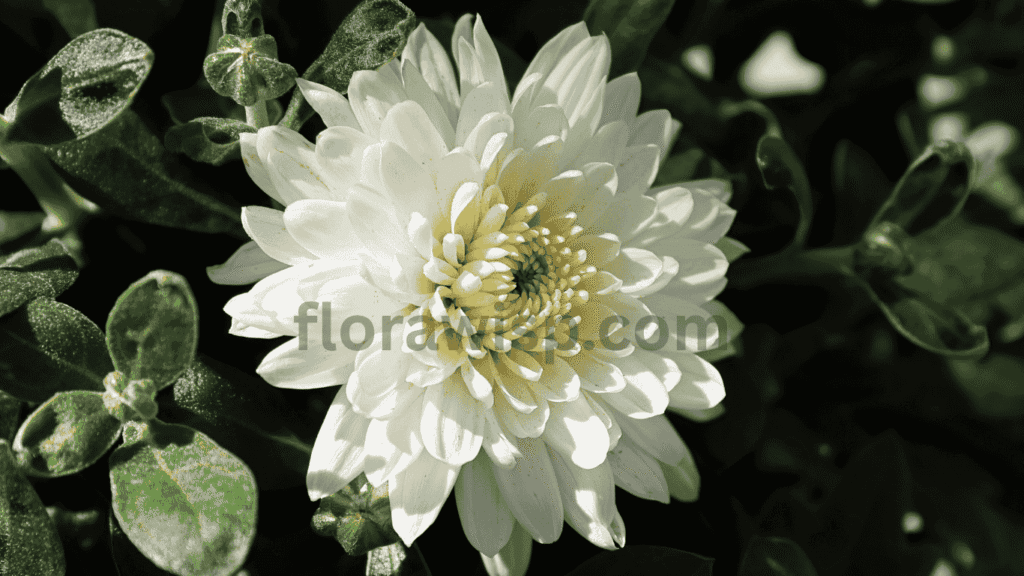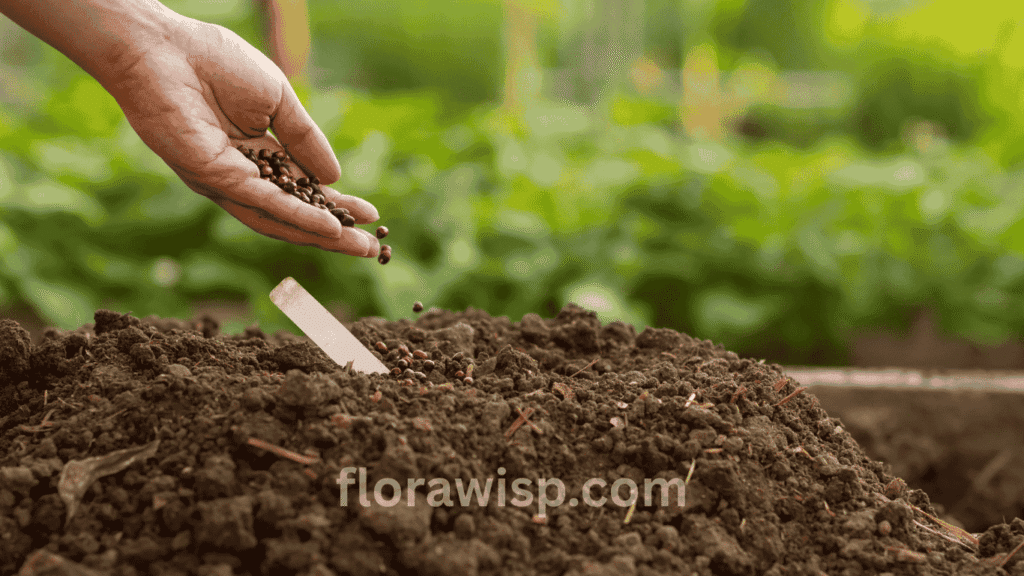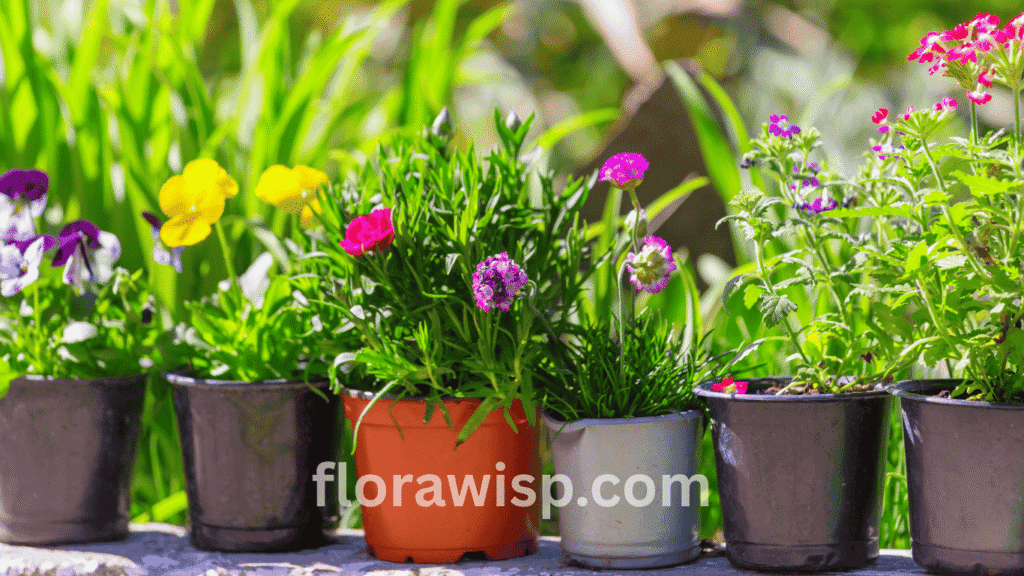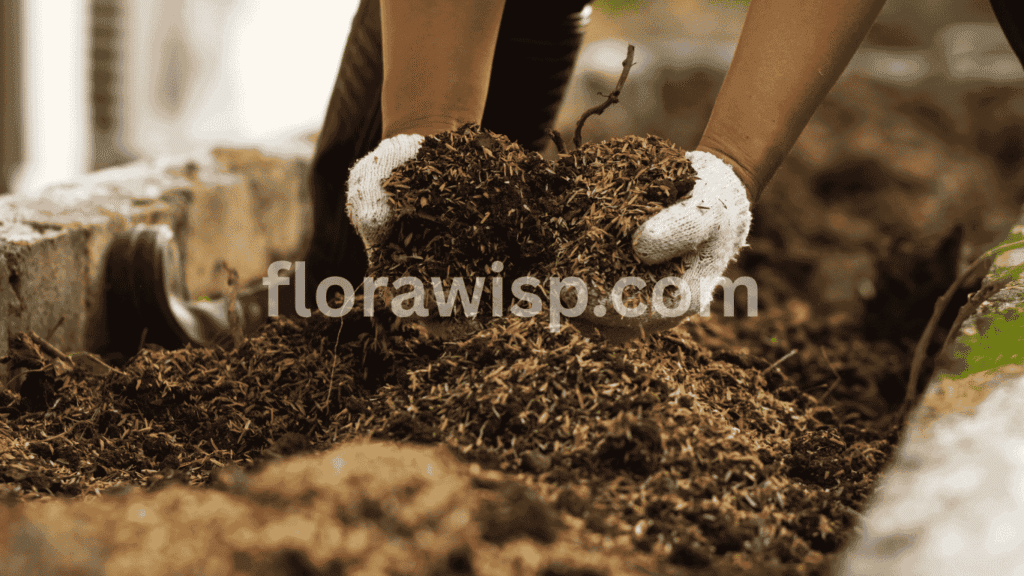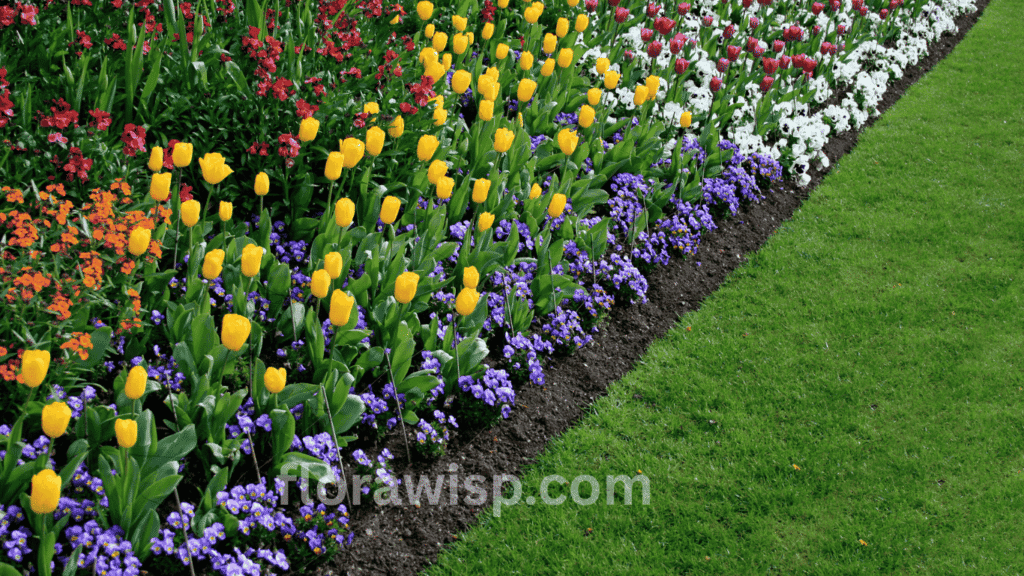Searching for the best types of zinnias? Discover 17 stunning varieties with names, colors, growing tips, and expert advice for borders, pots, or cut flowers. I still remember the summer I switched from generic seed mixes to thoughtfully selected zinnia varieties. It changed everything. My flower beds exploded with vibrant colors, and my cutting bouquets lasted longer than ever before.
In This Article
Zinnias are the backbone of American summer gardens, especially for gardeners in USDA Zones 5–9. Their dazzling hues, heat tolerance, and low-maintenance nature make them an unbeatable choice. Whether you’re building a cutting garden or just brightening up a patio, understanding the different types of zinnias helps you choose the right plant for every spot.
In this guide, you’ll discover trusted zinnia varieties, how to use them in a zinnia bouquet, and where to find zinnia seeds in bulk to save money and time.
Exploring the Diverse Types of Zinnias for Every Garden
Zinnias aren’t just vibrant fillers, they’re strategic garden choices that adapt beautifully to different beds, borders, and containers. Over my years cultivating zinnias across USDA Zones 5–9, I’ve learned how essential it is to understand the subtle differences between each form and variety. Choosing the right zinnia ensures color longevity, pollinator support, and even disease resistance.
Heirloom vs. Hybrid Zinnias
Heirloom types offer classic appeal, often self-seeding and maintaining genetic consistency. They’re ideal for wildflower borders or naturalistic beds. On the other hand, hybrids like the zinnia dahlia series have been bred for uniform bloom size, improved resistance, and extended flowering seasons great for high-performance displays.
Zinnia Shapes That Make a Statement
The diversity in bloom shape is what truly sets the types of zinnias apart. You’ll find:
- Single blooms with open centers, attracting pollinators
- Double blooms for dense, rounded heads
- Cactus zinnia with spiky, curled petals that add dramatic texture
- Dahlia zinnia with lush, full petals resembling traditional dahlias
These forms aren’t just about aesthetics they also affect airflow, mildew resistance, and cutting potential.
Color Beyond the Usual
While reds and pinks dominate, shades like green zinnia bring elegance and balance to cutting gardens and modern designs. Blending these unexpected tones creates standout arrangements that shift with the season.
Whether you’re creating a vibrant summer bed or planning a cutting plot, knowing the types of zinnias available will help you grow with purpose and creativity.
Zinnia Varieties That Brighten and Protect Every Garden Bed
Zinnias are more than just color; they’re problem-solvers and space-fillers, too. Over the years, I’ve relied on different types of zinnias to create vibrant displays, manage pests, and support pollinator activity. The right combination of colors and growth habits can elevate any garden bed into a flourishing ecosystem.

A Color Palette That Pops
Few flowers rival the visual spectrum zinnias offer. Soft pink zinnia blooms add romance to borders, while bold red zinnia varieties anchor the design with intensity. For a touch of fiery drama, plant orange zinnia selections thrive especially well in full-sun beds. To balance brighter shades, I always include white zinnia for a clean, neutral backdrop that makes colors stand out in both the bed and a zinnia bouquet.
Structure and Strategy
Choosing zinnias by height and shape is essential for garden balance. Taller zinnias like State Fair and California Giants create a layered canopy, while mid-sized types offer filler support. I often plant creeping zinnia plants at the edge of my borders. Though technically a different species, they behave beautifully as groundcovers perfect for softening hard edges or filling between stepping stones.
Companion Planting and Protection
Zinnias are excellent companions for veggies like tomatoes and squash. Their strong scent and vibrant blooms help repel aphids and attract beneficial insects. Mixing various types of zinnias not only enhances the garden but also strengthens its resilience. For an early-season burst of color that transitions beautifully into summer zinnias, consider pairing them with daffodil flower bulbs an unexpected but rewarding companion.
Let color, structure, and function guide your zinnia choices this season you’ll see the difference in every bloom.
Zinnia Profusion: The Compact Power Performer
Among the many types of zinnias I’ve cultivated, the Profusion series has never failed to impress especially here in the humid conditions of Zone 8b. Compact, vibrant, and exceptionally hardy, zinnia profusion varieties are a reliable choice for anyone seeking vivid color without constant upkeep.
Ideal for containers and edging borders
These dwarf zinnias stay under 15 inches tall, making them ideal for container gardens, tight borders, or pathways where you want dense color without height. I’ve often planted them along walkway edges where their tidy growth and rich blooms brighten the entire line of sight. For more tips on growing and arranging zinnias in pots, explore my full guide on container success with bold, compact blooms.
Color variants and mildew resistance
One of my absolute favorites is the profusion orange zinnia. Its fiery tones remain striking even under direct sun, and it pairs beautifully with soft hues like pink zinnia for layered, cheerful designs. What makes the Profusion series stand out most, however, is their disease tolerance. These are mildew-resistant zinnias, a game-changer if you’re gardening in humid or rainy areas.
Proven Success in the Garden
I’ve tried the Profusion zinnias across three back-to-back summers, and their performance has been consistent. They bloom early, resist fading, and continue flowering into fall with minimal deadheading. If you’re short on time but still want a garden full of life, Profusion zinnias are the easy choice that doesn’t compromise on color or longevity.
For low-maintenance beauty, this compact powerhouse deserves a prime spot in every zinnia grower’s lineup.
Thumbelina Zinnia: Perfect for Small Gardens and Young Gardeners
Among the many types of zinnias I’ve grown, Thumbelina zinnia stands out as a delightful choice for both compact spaces and children’s gardens. These miniature wonders reach just 6 to 8 inches tall and naturally form neat, dome-like mounds earning them a spot in my favorite dwarf zinnias list.
Small Size, Big Impact
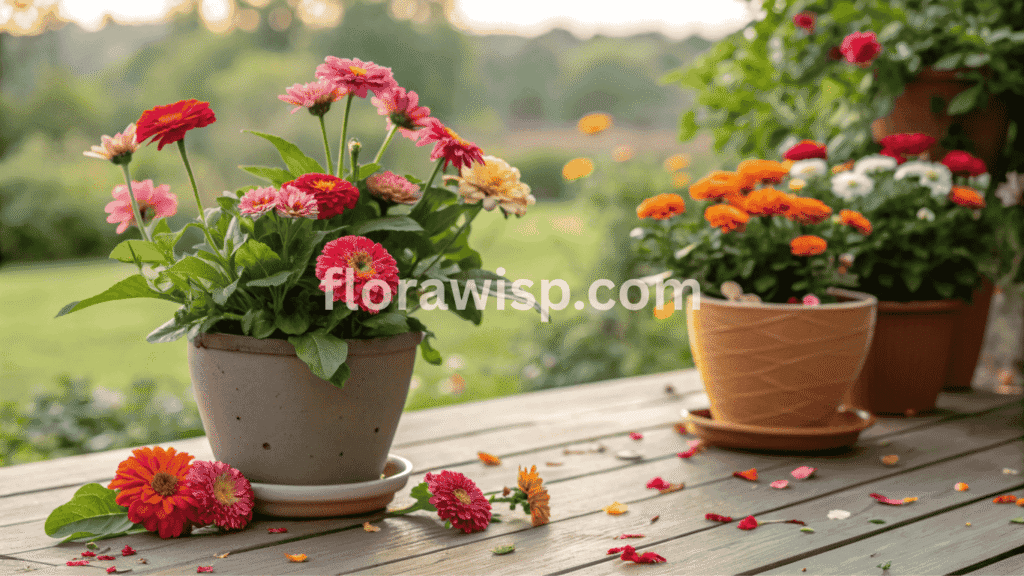
Thumbelinas are ideal for edging beds, filling in front borders, or bringing color to balcony containers. Their tiny stature doesn’t hold back their bloom power. They produce a cheerful burst of reds, oranges, yellows, and pinks that light up the garden from early summer to frost.
A Kid-Friendly Flower
Because of their manageable size and vibrant shades, I often recommend them as top kids’ garden flowers. Children love their quick germination and prolific blooming. It’s a perfect way to introduce young gardeners to the joy of growing.
Pro Tip: Pinch for Density
To get the most out of these compact zinnias, pinch back the growing tips once the plants reach about 4 inches tall. This encourages bushier growth and more flowering stems.
In my experience, Thumbelinas prove that even the smallest varieties among the types of zinnias can bring big joy and a lot of color to any garden.
Benary Giant Zinnia: The Giant Every Cutting Garden Needs
Of all the types of zinnias I’ve grown for bouquets, none perform quite like the Benary giant zinnia. These are the showstoppers producing blooms up to 5 inches across on long, sturdy stems that make them the top choice for cut flower growers across USDA Zones 5–9.
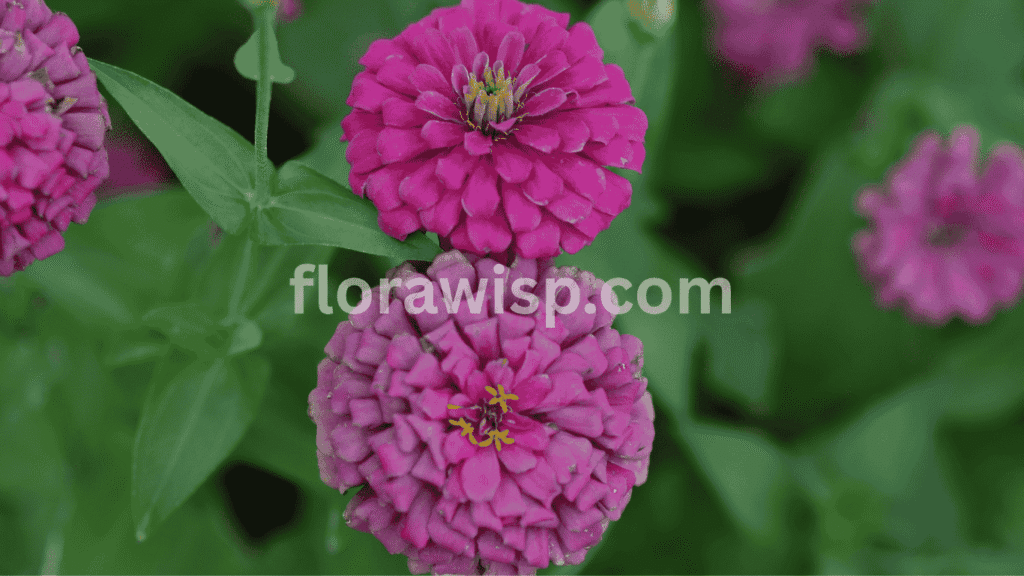
Built for the Vase
In my cut flower trials, Benary giants consistently ranked highest for vase life and resistance to petal drop during transport. Their layered, domed blooms hold color beautifully, even in the intense heat of midsummer. Whether you’re selling stems or filling a kitchen vase, they’re a reliable staple.
Texture and Volume for Bouquets
Pairing Benary giant zinnia with zinderella zinnia creates stunning depth. The zinderella’s semi-ruffled texture complements the smooth boldness of the giants, and together they form the backbone of any bold zinnia bouquet.
Seed Selection Matters
If you’re serious about production, investing in quality giant zinnia seeds pays off. Look for disease-resistant stock and select for consistent stem strength. Among the giant zinnias, Benary stands out for its vigor and reliability.
This variety proves that when it comes to types of zinnias for cut flower success, bigger can definitely be better.
Zinnia California Giants: Towering Heirlooms with Vintage Appeal
When it comes to nostalgic garden charm, Zinnia California Giants embody the classic essence of traditional American flower beds. As one of the tallest and most dramatic types of zinnias, these heirloom favorites consistently earn their place in my garden season after season.
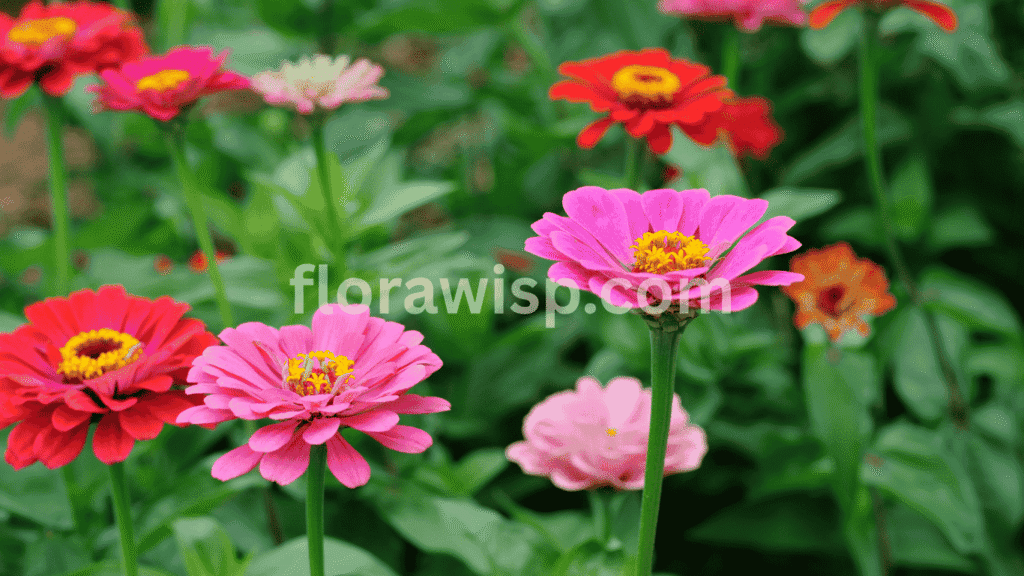
Heirloom Zinnias That Stand Tall
These tall zinnia varieties can reach heights of 3 to 4 feet, creating a striking backdrop for borders or acting as bold visual anchors in cottage-style plots. Their open-pollinated, heirloom zinnia heritage ensures genetic diversity and vigorous reseeding. In my Zone 7 garden, I’ve often seen self-sown seedlings emerge the following spring strong and true to type.
Unique Form with Cactus-Style Petals
One thing I always admire is their wide range of flower forms. Many blooms mimic the cactus zinnia shape, with delicately curled petals that dance in the wind. The orange zinnia hues are especially brilliant, holding their fiery tones even in intense sunlight.
Sowing Tips for Success
For the best performance, direct sow after the final frost in Zones 5–9. These zinnias dislike transplant shock, but once established, they bloom prolifically from midsummer through fall with regular deadheading.
Of all the types of zinnias, California Giants offer unmatched height, old-fashioned elegance, and season-long vibrancy a true showpiece for any garden.
Dwarf Zinnias: Compact Power for Containers and Borders
For gardeners working with limited space or seeking vibrant low-growing layers, dwarf zinnias are among the most versatile types of zinnias. These compact growers like magellan zinnia, zinnia zahara, and thumbelina zinnia offer nonstop color without sacrificing performance.
Ideal for Small-Space and Urban Gardens
As someone who frequently plants in containers and tight garden corners with different types of zinnias, I rely on these compact zinnias to add structure and color without crowding. With heights typically under 12 inches, they’re ideal for balcony boxes, edging paths, or mixed in with herbs and other annuals.
Why Dwarf Zinnias Are a Smart Choice
Beyond their size, these varieties offer superior resistance to mildew and pests. The zinnia zahara series, in particular, thrives in hot, humid conditions with minimal care. I’ve grown magellan zinnias in full sun beds, and they consistently produce round, vibrant blooms that rival taller types.
Pairing for Texture and Color
Mixing thumbelina zinnia with other dwarf zinnias creates a layered, playful look perfect for kids’ gardens or pollinator patches. Their wide range of hues and dense growth habit make them an essential addition to low-maintenance, high-impact flowerbeds.
Among the many types of zinnias, dwarf selections prove that size doesn’t limit beauty or utility in a well-planned garden.
Giant Zinnias: Towering Color for Bold Garden Beds
When it comes to bold, head-turning garden features, giant zinnias take center stage. These towering varieties, especially the widely trusted benary giant zinnia, can reach heights of up to 4 feet with massive, fully double blooms that mimic the elegance of zinnia dahlia types. Their dramatic structure makes them ideal for cutting gardens and backdrop borders.
Why Grow Giant Zinnias?
Their height and dense blooms offer maximum visual impact with minimal effort. Whether you’re after soft pink zinnia tones for romantic beds or vibrant reds and oranges, these zinnias deliver. I always space my plants at least 12–18 inches apart to ensure airflow, which reduces powdery mildew and encourages stronger stems. If you’re serious about statement-making displays, start with high-quality giant zinnia seeds and sow them directly after the last frost.
Among all types of zinnias, giants stand out as the most dramatic and rewarding for large-scale planting.
Queen Lime Zinnia: Sophistication in Muted Tones
For gardeners looking to add understated elegance, the queen lime zinnia is unmatched. Its unique green-tinged petals often feature a soft blush or purple zinnia tone, making them ideal for designer cut flowers and contemporary garden palettes.
What Sets Queen Lime Apart?
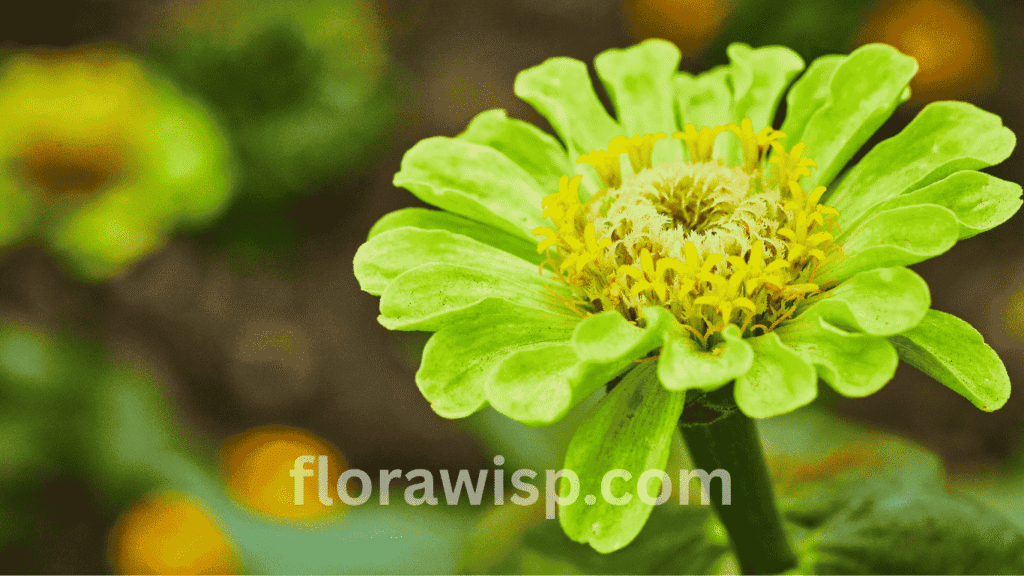
Unlike traditional brights, these blooms bring balance and refinement. They pair beautifully with white and deep purple companions, adding contrast and calm to otherwise vivid beds. In my Zone 7 garden, they perform best in full sun and nutrient-rich, well-draining soil. With the right conditions, their color intensifies, making them a showpiece in high-end floral arrangements.
When exploring types of zinnias that offer more than just brightness, queen lime brings texture, tone, and timeless beauty.
State Fair Zinnia: Traditional Beauty with Modern Vigor
If you love classic summer beds, the state fair zinnia delivers nostalgia with performance. This variety brings together the vigor of modern hybrids with the charm of classic zinnia varieties. It’s known for its tall growth and radiant colors, including vibrant white zinnias.
Perfect for Show-Stopping Displays
With proper care, these zinnias produce uniform blooms that hold up in summer heat. In my experience, pinching the tips when plants are about 6 inches tall encourages branching and fuller flowering. I also feed every two weeks with a balanced fertilizer for continuous bloom production.
Among the types of zinnias, the state fair is a must-grow for those who appreciate structure, longevity, and strong garden performance even during high temperatures.
Zinnia Lilliput: Small Blooms, Big Visual Impact
Zinnia lilliput, with its charming globe-shaped flowers, is a favorite for dense plantings and pollinator gardens. These small-flowered zinnias bloom in profusion and bring depth when mass-planted, especially alongside persian carpet zinnia tones.
Ideal for Mass Planting
Compact in stature but rich in color, lilliput zinnia varieties are perfect for edging, cottage gardens, or infill planting. Bees and butterflies flock to them, especially when planted in wide drifts. I recommend sowing thickly and thinning selectively to create a carpet of tight, tidy blooms.
If you’re designing with smaller types of zinnias, lilliputs are both functional and decorative.
Zinnia Seeds Bulk: Smart Buying for Large Plots
For anyone planning large displays or cut flower beds, purchasing zinnia seeds bulk is a cost-effective approach. Over the years, I’ve tested seed packets from multiple vendors, comparing germination rates, bloom timing, and plant health.
Plan Ahead for the Best Results
Start by defining your bloom goals whether it’s for giant zinnia seeds, dahlia zinnia seeds, or filler for a zinnia bouquet layout. Order early in the season to access fresh stock, and store seeds in a cool, dry space until sowing time. Sourcing in bulk also allows for trialing different varieties without breaking the bank.
Bulk buying gives you freedom and flexibility across all types of zinnias.
Candy Cane Zinnia: Bold Stripes, Instant Appeal
Few varieties pop like the candy cane zinnia. With their crisp red zinnia and white zinnia striped petals, they add whimsy to every border and bouquet.
Getting the Most from Candy Cane Zinnias
To enhance the stripe contrast, I always direct sow in warm, well-worked soil. They thrive in sunny spots and perform best with moderate feeding. Their standout pattern makes them excellent focal points in mixed beds.
If you’re selecting types of zinnias to surprise and delight, candy cane is a visual treat worth planting.
Creeping Zinnia: The Groundcover That Works Hard
Though not a true zinnia, creeping zinnia (part of the sanvitalia groundcover family) is one of my favorite fillers. I’ve tested it extensively in dry, rocky beds where traditional zinnias struggle.
Performance in Challenging Conditions
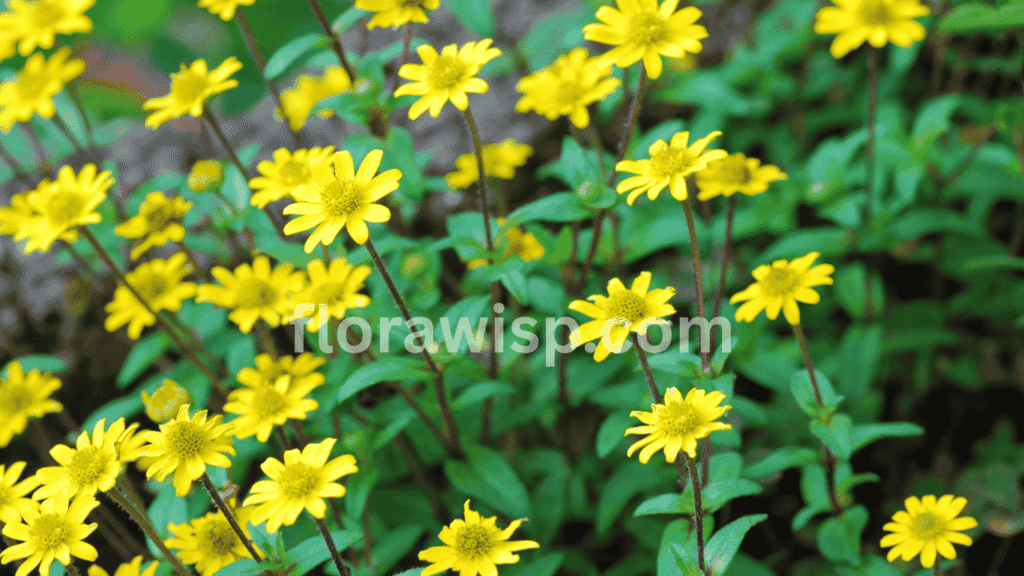
The creeping zinnia plants form a dense mat of foliage dotted with bright yellow blooms. In my Texas beds, they handled drought conditions remarkably well. Use them between pavers, along borders, or to soften hardscapes. Their versatility and cheerful look make them a reliable companion for upright varieties.
Among functional types of zinnias, creeping zinnia is an unsung hero.
Creeping Zinnia Plants: Brightening Tough Spaces
If you have limited space or challenging soil, creeping zinnia plants offer a sunny solution. Their yellow low-growing zinnias brighten up rock gardens, walls, and containers with ease.
Easy to Grow, Easy to Love
What makes them special is their adaptability. For shadier corners, I sometimes switch to sanvitalia alternatives, but in sunny exposures, creeping zinnias deliver vibrant ground coverage. Propagate from cuttings or seeds and enjoy nonstop bloom until frost.
They may be unconventional, but these plants hold their own among more classic types of zinnias.
Magellan Zinnia: Balanced Form and Bloom Reliability
For neat, consistent structure in bedding designs, the magellan zinnia is a go-to. These compact growers form rounded plants covered in blooms that perform reliably from early summer to frost.
Ideal for Formal Flower Beds
Whether you’re planting magellan mix zinnias or sticking to a single shade, these plants keep their shape well. I’ve used them in everything from park borders to urban gardens. Pinching early and maintaining even moisture ensures they stay full and healthy.
Of all the bedding zinnia varieties, Magellan consistently offers dependability and color in one tidy package, an essential among practical types of zinnias.
FAQs
Q1. What makes dahlia zinnia different from classic varieties?
Dahlia zinnias stand out for their large, double-layered blooms that closely mimic real dahlias in shape and fullness.
Unlike classic single or semi-double zinnias, these showstoppers offer dense petal arrangements and bold, formal texture ideal for cutting gardens. They come in rich, saturated shades great for adding structure to mixed beds. In my Zone 7 garden, dahlia zinnias consistently outperform other types of zinnias when it comes to visual drama and bouquet longevity.
Q2. Where can I buy high-quality giant zinnia seeds online?
Trusted sources for premium giant zinnia seeds include Baker Creek, Eden Brothers, and Johnny’s Selected Seeds.
Look for seed packets with high germination rates, fresh harvest dates, and real gardener reviews. I often bulk-order giant zinnia seeds early in the season to ensure availability. Whether you’re after Benary or California Giants, top-quality seed makes a noticeable difference in bloom size and plant health especially with taller types of zinnias.
Q3. How do I use pink zinnia flowers in garden borders or bouquets?
Pink zinnias create soft contrast when paired with white, lavender, or orange tones in borders and floral arrangements.
I often group pink zinnias near silver foliage or airy grasses to let their color pop naturally. In bouquets, I blend them with bolder types of zinnias like Benary Giant or Queen Lime for layered elegance. Their long stems and blush tones help unify bold and pastel palettes effortlessly.
Q4. What are the best practices for growing white zinnias in full sun?
White zinnias need full sun, loose soil, and regular deadheading to stay vibrant and mildew-free throughout the season.
I recommend spacing them 10–12 inches apart for airflow, and applying organic mulch to retain moisture during heat waves. In my garden, white zinnias do best when fed every two weeks with a balanced fertilizer. Their crisp, clean blooms are stunning in moon gardens or minimalist layouts.
Q5. How do I create a long-lasting zinnia bouquet from multiple types?
Harvest early in the morning, use sterile shears, and strip foliage below the waterline for a bouquet that lasts 5–7 days.
I layer tall varieties like Benary Giant Zinnias with fillers like Profusion or Lilliput for structure and texture. Change the vase water every other day and keep the bouquet out of direct sunlight. Among all types of zinnias, mixing bloom sizes ensures depth and color balance in arrangements.
Q6. Is zinnia Zahara good for containers and humid climates?
Yes, Zinnia Zahara thrives in container plantings and handles humidity exceptionally well due to its mildew resistance.
I’ve grown Zahara zinnias on shaded patios in humid summers without losing color or bloom density. Their compact zinnia habit makes them ideal for tight spaces, balconies, or front porch displays. Among modern types of zinnias, Zahara delivers disease-free blooms without constant maintenance.
Conclusion
Mastering the different types of zinnias transforms your garden from ordinary to unforgettable. Whether you need compact bloomers for a patio or statement-making stems for bouquets, the right zinnia makes all the difference.
Experiment with at least three new types of zinnias this season. You’ll discover combinations you never thought possible.
Looking to dive deeper? Check out our pillar planting flowers guide to explore the best sources and growing tips for every variety mentioned above.
References
UF/IFAS Gardening Solutions – Zinnia Care & Types
Missouri Botanical Garden – Zinnia (Genus Profile)
Wikipedia – Zinnia elegans Cultivars
Gardener, M.Sc. Horticulture
Elara Bennet is a gardening writer from Austin, TX, passionate about sustainable lawns and blooms. Read full bio →

